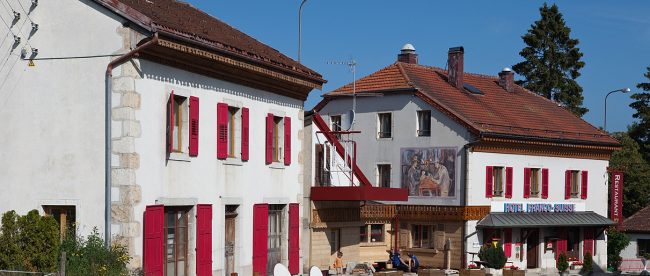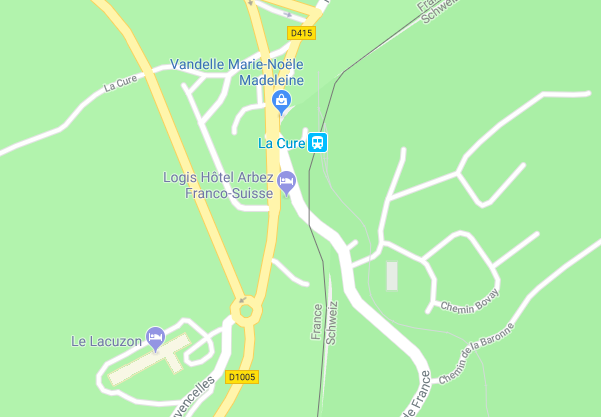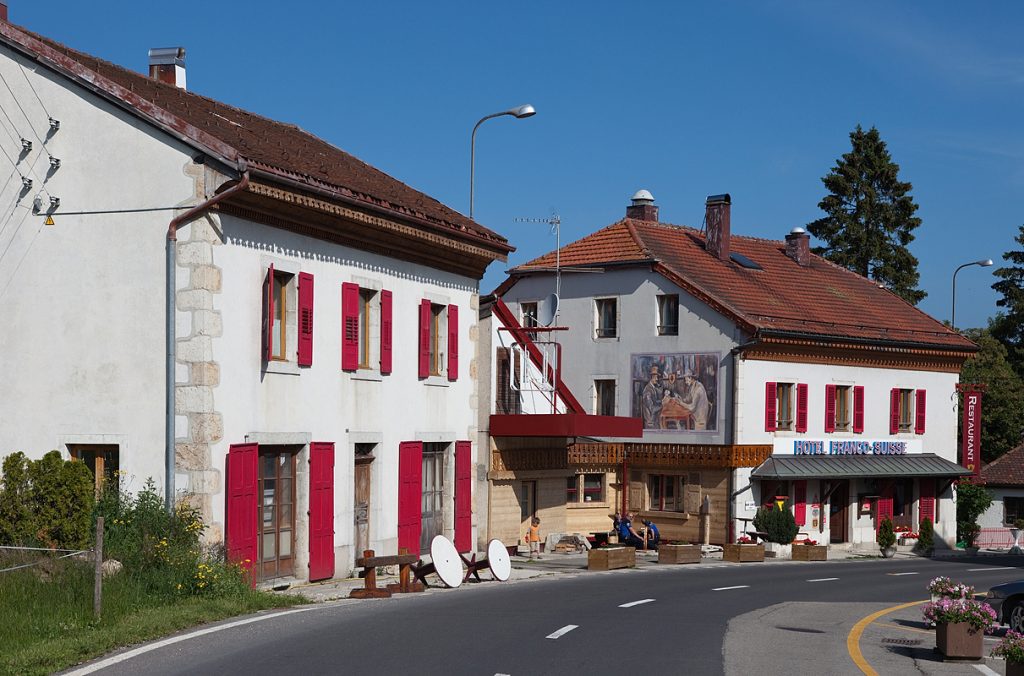The Border-Splitting Hotel That Hid The Resistance


On the border of France and Switzerland is the town of La Cure. As suggested by the map above, the words “on the border” should be taken literally — the line between the two nations slices La Cure into two parts, with about two-thirds of the town in France and the remaining third in Switzerland. It’s been that way since 1862, the result of a series negotiations designed to unwind Napoleon’s conquests more than 50 years prior. But the result is now a geographic curiosity — one which helped the French Resistance hide from German occupiers in World War II.
It manifests in the form of a hotel, pictured below.

In the early 1800s, the French Empire, under the leadership of Napoleon, spread throughout Western Europe. France annexed part of Switzerland during this time period but after Napoleon’s defeat, France had to give back much of its conquered and annexed territories. Among those areas given back was a small but militarily significant area which France really wanted to keep, and for the next fifty years, give or take, France tried to get Switzerland to agree to give it back. Ultimately, in December 1862, Switzerland agreed to a trade — they’d give back that area in exchange for an equally-sized parcel of land from France. The part of La Cure now in Switzerland is what France ended up giving up as part of that deal.
But the trade wasn’t just empty land. There were already a few buildings in the ceded area, so the agreement had to account for that. Existing structures, per the terms of the deal, would be left as-is, straddling the line. There was a loophole, though — “existing” was defined to mean as of the date of the land transfer, not the date of the agreement. And that wasn’t until February of 1863. As Conde Nast Traveler notes, “that winter, an enterprising local landowner named M. Ponthus decided to build a bar and grocery store right on the new border before it went into effect, hoping to make a killing on a quasi-legal cross-border trade in alcohol, tobacco, and chocolate.”
Whether that economic gambit succeeded is anyone’s guess, but Ponthus made some money on the plan in a different way. In 1921, he ended up selling border-crossing half-pub, half-grocery store to a man named Jules-Jean Arbeze. The new owner repurposed the structure as a hotel and named it Hotel Arbez, after himself. As Wikipedia explains, “the border runs lengthwise through the two buildings, passing just to the left of the mural. The mural and everything to the right of it lies in Switzerland; France lies to the left.” In other words, once inside, you can pretty easily cross from one country to the other without intending to do so.
When the Germans occupied France during World War II, this became a convenient fact for French resistance fighters. “German soldiers could enter the hotel,” Amusing Planet reports, “but only the part located on French soil. To access the upper floors it was necessary to climb the ladder, but the ladder started in Swiss territory.” German forces did not want to encroach on Switzerland’s neutrality, so they’d not enter the hotel. As a result, Amusing Planet continues, “the upper floors became a refuge for fugitives and the resistance.”
Years later, France would once again take advantage of the hotel’s ambiguous location; after the Algerian War, France and the Algerians negotiated the terms of that war’s treaty in the Swiss sections of the hotel. For the French, it was a convenient location; for the Algerians, it was a neutral site.
Today, you can go to Hotel Arbez even if international diplomacy or a safe haven isn’t your goals — you can book a room via most travel sites for about $150 a night.
Bonus fact: When Napoleon took over the Netherlands, he installed his brother, Louis Bonaparte, as its ruler. Louis was supposed to be a caretaker king but had visions of doing more, and took it upon himself to learn Dutch in an effort to ingratiate himself with his new subjects. Unfortunately, it didn’t go so well, at least at first. Per Wikipedia, “allegedly, his Dutch was initially so poor that he told the people he was the ‘Konijn van ‘Olland’ (‘Rabbit of ‘Olland’), rather than ‘Koning van Holland’ (‘King of Holland’).” The error turned into a moniker for life; he was often called the “King of the Rabbits” as a result.
From the Archives: Scrambled City: The town which is split up and spread all over the map — without regard for international borders.
